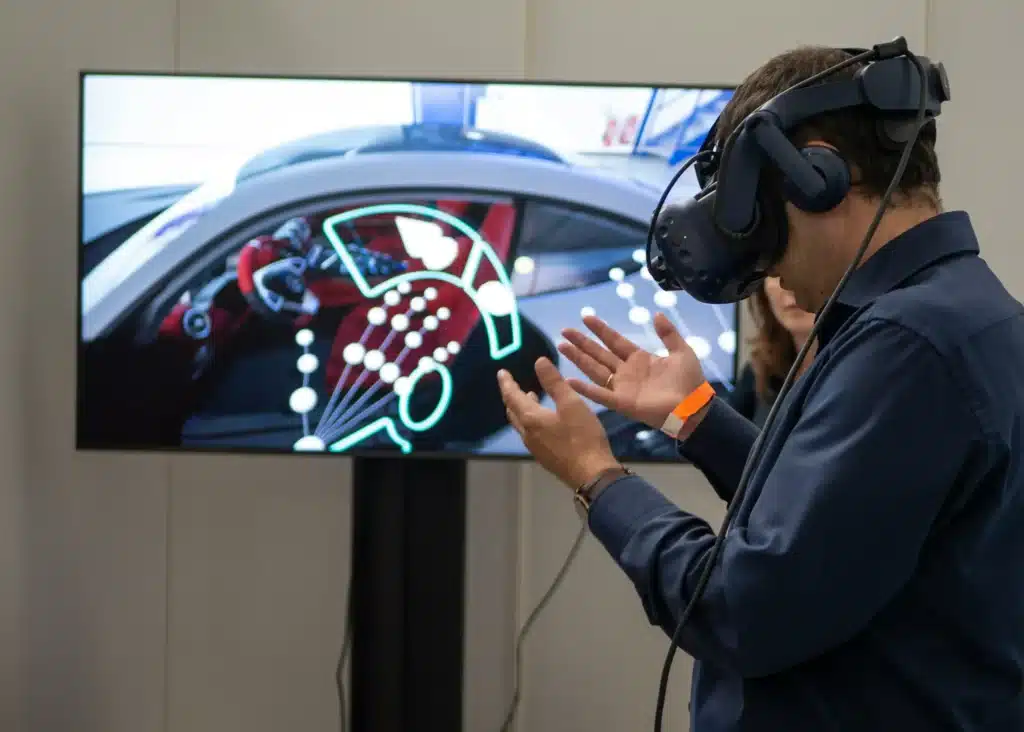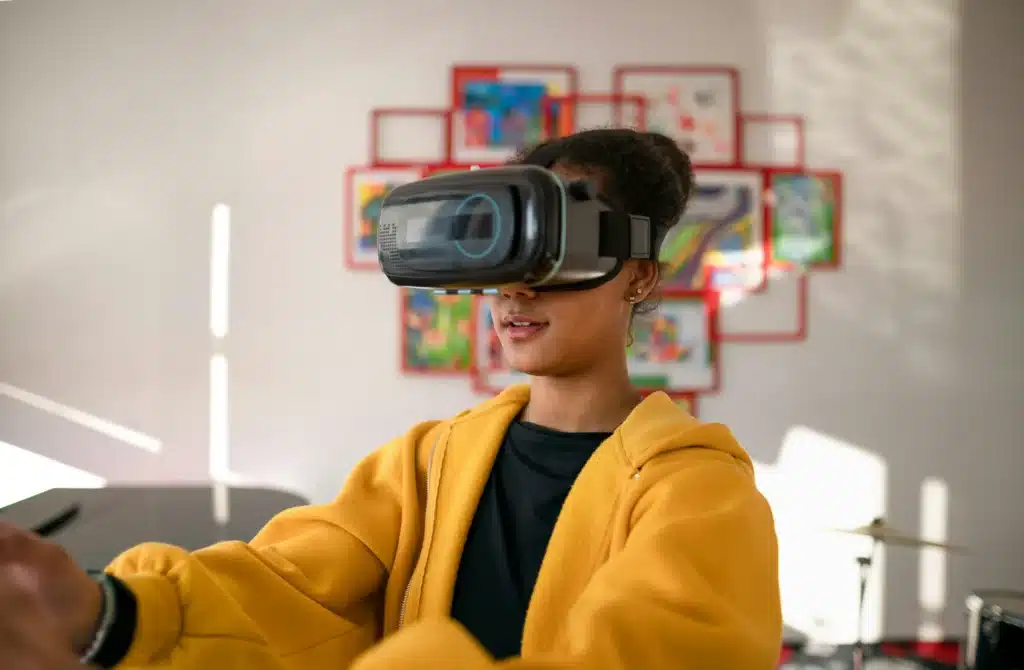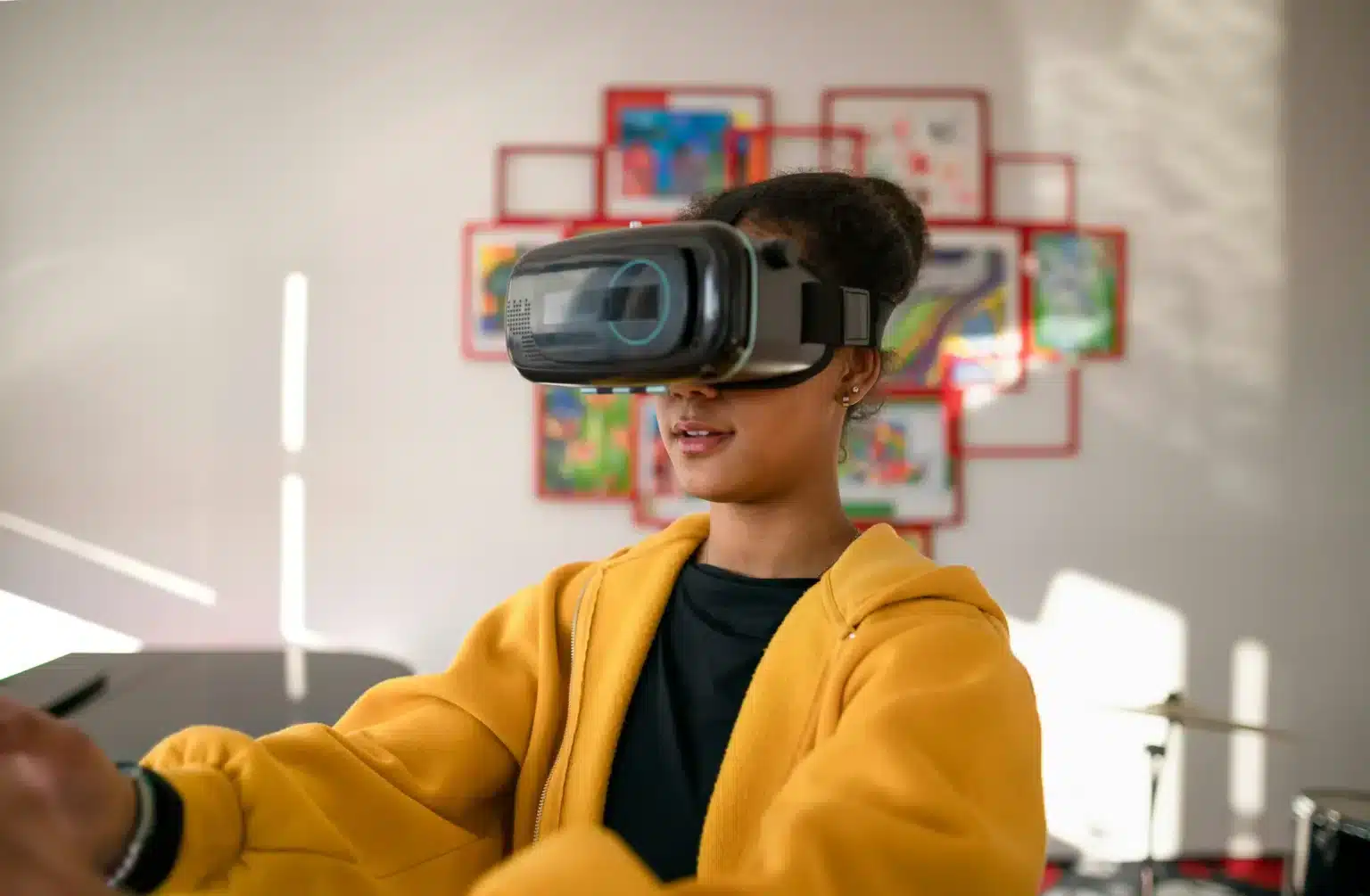The use of Augmented Reality or AR has greatly increased over the last decade, and it has many different applications in a variety of industries. The technology allows users to visualize a computer-generated image superimposed in their real-world view.
A question many AR enthusiasts like you have been asking is, “Can AR be projected?” In this article, you will have your question answered and learn more about projection-based AR.
What is AR?
Before we get into projecting AR, let’s talk about what AR means. AR has come an incredibly long way since the idea was first introduced in 1957.
Cinematographer Morton Heilig was responsible for inventing the ‘Sensorama’ that started it all. A decade after that, Ivan Sutherland developed a head-mounted display. This invention would set the tone for what AR would grow to in the years to come.
AR gained public popularity quickly in the early 2000s when the first AR game launched. This development re-introduced AR and inspired an entire generation.
AR games for smartphone apps changed the way users experience games as there was no need for head mounts or other accessories.
Just think of how ‘Pokemon Go’ took over the world at one stage. With just a smartphone, users were able to enjoy interactive gaming.
At this point, companies began seeing the potential of AR, and they began to use AR for commercial purposes, using the technology to their advantage.
Many different industries have been using AR since then. These include the automotive industry, healthcare, teaching, and advertising. Even NASA found AR useful, and they used it as a navigation device in one of their space crafts in the 90s.
Presently, four types of AR are commonly in use. These are marker-based AR, markerless AR, location-based AR, and projection-based AR. This article will focus on projection-based AR to discuss how AR can be projected.
What Is Projection-Based Augmented Reality?

Projection-based AR is a technology that can directly overlay digital images or video onto objects or surfaces in the real world. There is no need for any devices such as mobiles or headsets to experience the digital images.
This development means that the interface is no longer a limitation to the AR experience. Instead, the limitation comes from the environment associated with the AR experience. The result is that project-based AR can be a shared experience on a much larger scale.
Types of Projection-Based AR
Two types of projection-based AR exist, either static or dynamic. Static AR projection refers to images and animated effects projected onto a stationary surface. There are no triggers that cause changes in the images.
Dynamic AR projection differs by allowing changes to occur. These changes are based on external physical triggers. Thus, dynamic AR projection offers a more interactive experience.
How Can AR Be Projected?
Cameras, projectors, and the appropriate software work together to project an augmented reality. The cameras and projector work together to project the image, video, or text onto surfaces.
The calibration of the projectors and cameras is critical to ensure that everything is in sync. The design of the software considers the use of the projection.
For example, is it static or dynamic projection? Dynamic projection will need additional position tracking cameras to work.
The next thing that projection-based AR needs is a depth and edge map. To produce an effortless change in effects or images, mapping the surface is essential. Together with the cameras and projectors, the map works together to project the images onto the surface.
Benefits of Projection-based AR
Projection-based AR has many benefits. First, users don’t experience the fatigue commonly associated with AR accessories.
For example, eye fatigue is a common side effect of prolonged use of AR headsets. Some people also experience hand fatigue from holding a device for too long.
Additionally, there have even been reports of fatigue from wearing head mounts. Projection-based AR avoids this and allows users to experience AR in a whole new way.
Besides entertainment, the practical use of projected AR has been extremely useful in many industries.
For example, projections of a properly operating machine offer an unprecedented opportunity for training and maintenance.
You can find a fault in the machine in real-time, making it easier to follow protocols or repairs without stopping to consult a manual. Likewise, projection-based AR can also be used for teaching and practice in the medical field.
Yet, projected AR is not just for guidance. It has the power to both detect and prevent errors from occurring. Furthermore, when you consider that most people are visual-based learners, the scope of benefits projected AR offers is unrivaled.
So, projection-based AR is a fun, interactive experience that can be used in various ways. It has its advantages over conventional AR, and these advantages enhance its applications greatly and provide a shared AR experience that is not limited by a screen or device. Now that you know what it is and its benefits, it’s time to find out how projection-based AR works.
Limitation of Projection-based AR

The range of the cameras is probably the main limiting factor to projection-based AR. Users can walk through the environment and interact with the projections but need to be within camera range.
The other limitation of projection-based AR is the light density of the environment. Dimly lit environments are ideal for projections as too much light decreases the visibility of the projections. If this happens, the overall experience is reduced.
This limitation ultimately means that you cannot use it outdoors during the day.
However, this has not stopped projection-based AR from gaining popularity. People have used it to play musical instruments, in classrooms for interactive learning, and advertising. BMW is particularly fond of projection-based AR, and they have been using it since 2008. They were even the first company to use AR commercially!
No matter the shape or size of the surface, you can use projection-based AR on it. The only thing that you need to do is tinker with the software to ensure that the hardware is in sync.
Just think of all the stage set-ups you have seen at concerts and awards shows. It is even used in architecture for house design projections and retail for product exhibitions. Artists also utilize projection-based AR and are common in many exhibitions worldwide.
The technology is the same but on different scales. As long as you have the hardware to handle gathering information in real-time, you will not be limited.
Is Projection Mapping AR?
Technically, projection mapping is the technology that makes it possible to make projections onto a non-flat surface. So, it is not AR but the technology that makes projection-based AR possible.
The fact that projection mapping was initially known as spatial augmented reality is most likely why it is mistaken for AR. Either way, projection-based AR would not be possible without projection mapping.
Projection mapping is available in both 2D and 3D. It uses software to spatially analyze and map surfaces.
The map is then placed on a virtual representation of the real-life environment. This process enables the software and projector to correctly project your images onto the mapped surface.
The software allows you to decide where and how you want your images on the surface. You have control over the area that will display the image and the ultimate shape on the surface.
Disneyland had one of the first uses of projection mapping in 1969. It was of singers performing the theme song. The video appeared on physical busts in the Haunted Mansion.
Projection mapping has made it possible for everyone to experience projection-based AR on a large scale. Five decades later, this technology is now capable of covering entire buildings.
However, incorrect projection mapping or poorly conducted projection mapping can result in poor-quality projection. Therefore, the mapping must be done appropriately and given adequate time to calibrate. Doing the mapping correctly will ensure the best quality projection,
How Much Does a 3D Mapping Projector Cost?
The cost involved with projection-based AR depends on the size of the surface you wish to project upon.
There are four different types of 3D mapping projection: interior projection mapping, architectural video mapping, full-dome projections, and object video mapping.
Depending on the complexity and size of the surface, you may need a more complex system.
Considering the use of the projection is also important. If you want to use it for training or in an industrial setting, you must consider the return on investment (ROI). Even though they are expensive, the investment will be worth it.
This also applies if you are an advertising or events company. You get to offer clients an exciting new strategy, and the equipment should pay for itself in no time. These companies can pay approximately $10,000 per minute of projected AR.
On average, the starting price of a middle-range 3D mapping projector starts at approximately $800. Once again, it all depends on your requirements.
There are also additional factors that you should consider when buying a 3D mapping projector. You have to consider where you will be using it, the brightness of the room and why you will be using it.
Once you know this, you can look into a projector’s luminosity, resolution, contrast ratio, power requirements, and lifespan.
Other Considerations
There are other things to consider when buying a 3D Mapping Projector. One is luminosity. Luminosity refers to how much light a projector emits. The higher the number of lumens, the more powerful the projector.
Another factor is resolution. Resolution refers to the number of pixels that make up your image. The higher the pixel number, the more precise your image will be.
Ideally, it would be best to get a projector resolution close to your image resolution for the best results. The contrast ratio needs to be high to have clearly defined images.
Lastly, you should also consider that the projector cost is just one part of projection mapping. You still have to consider the software, computer, and media you will use. These factors will influence your choice of a 3D projector and the cost.
Can AR Be Projected at Home?
Well, the simple answer is yes. It does, however, need some technical know-how to get it done correctly. The good news is that as projection-based AR increases in popularity and use, more companies are developing user-friendly kits.
You can easily use these kits at home. They range from the complete hardware, software, and media to smaller kits with just software. It all depends on what your needs and budget are.
You can use projection-based AR for pure entertainment for events or as a unique learning tool that will help you visualize things easily.
Kids even benefit from interactive learning, and they can see cause and effects clearly. It may seem extreme to have it in your home, but it could be extremely useful – and fun.
Final Words
Project-based AR has been around, in some form at least, for almost six decades. Over this time, it has rapidly evolved to extend its application across many industries.
People have caught on to all the hype, from simple static projections to more complex and interactive dynamic projections.
Its use in art exhibitions, concerts, events, advertising, and valuable learning tools across different industries is continuously growing.
This versatility is what makes it so exciting. The possibilities for further applications of projection-based AR are truly limitless. As technology advances, so too will its uses.
Using projection-based AR has increased in recent years, and understanding how AR can be projected helps understand its current limitations.
If you want to invest in projection-based AR but are doubtful because of the price, you should rest assured that the ROI is worth it. You don’t even have to worry about it being difficult to operate.
There is software that helps. You can begin with smaller surfaces and static projection before jumping into a fully immersive experience. Learning how AR can be projected is simple; you just have to be willing to try.
